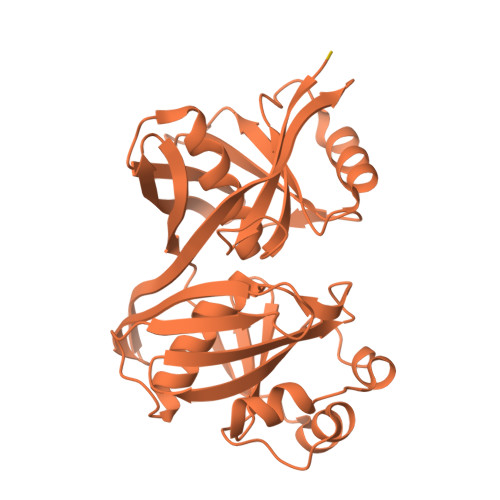Substrate-Based Ligand Design for Phenazine Biosynthesis Enzyme PhzF.
Baumgarten, J., Schneider, P., Thiemann, M., Zimmermann, M., Diederich, C., Blankenfeldt, W., Kunick, C.(2024) ChemMedChem 19: e202400466-e202400466
- PubMed: 39163032
- DOI: https://doi.org/10.1002/cmdc.202400466
- Primary Citation of Related Structures:
9F92, 9F93, 9F94, 9F95, 9F96 - PubMed Abstract:
The phenazine pyocyanin is an important virulence factor of the pathogen Pseudomonas aeruginosa, which is on the WHO list of antibiotic resistant "priority pathogens". In this study the isomerase PhzF, a key bacterial enzyme of the pyocyanin biosynthetic pathway, was investigated as a pathoblocker target. The aim of the pathoblocker strategy is to reduce the virulence of the pathogen without killing it, thus preventing the rapid development of resistance. Based on crystal structures of PhzF, derivatives of the inhibitor 3-hydroxyanthranilic acid were designed. Co-crystal structures of the synthesized derivatives with PhzF revealed spacial limitations of the binding pocket of PhzF in the closed conformation. In contrast, ligands aligned to the open conformation of PhzF provided more room for structural modifications. The intrinsic fluorescence of small 3-hydroxyanthranilic acid derivatives enabled direct affinity determinations using FRET assays. The analysis of structure-activity relationships showed that the carboxylic acid moiety is essential for binding to the target enzyme. The results of this study provide fundamental structural insights that will be useful for the design of PhzF-inhibitors.
- Technische Universitat Braunschweig Institut fur Medizinische und Pharmazeutische Chemie, Fakultät für Lebenswissenschaften, GERMANY.
Organizational Affiliation:

















